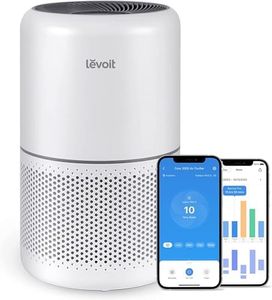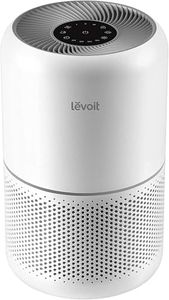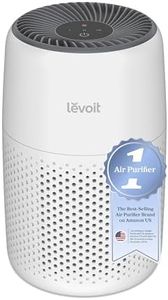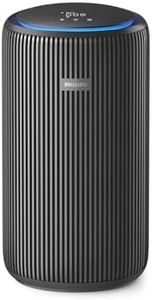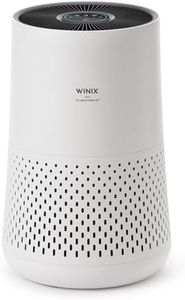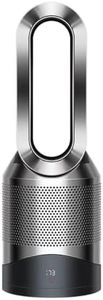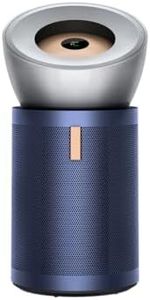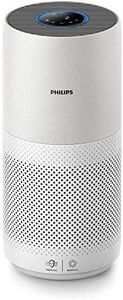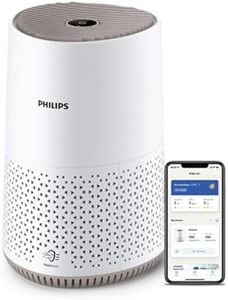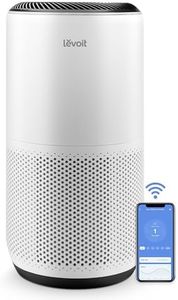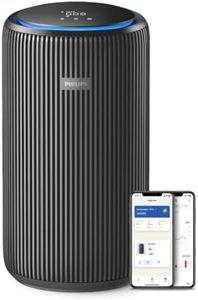We Use CookiesWe use cookies to enhance the security, performance,
functionality and for analytical and promotional activities. By continuing to browse this site you
are agreeing to our privacy policy
10 Best Air Purifiers For Pets
From leading brands and best sellers available on the web.Buying Guide for the Best Air Purifiers For Pets
Choosing the right air purifier for homes with pets is all about making sure it can handle pet hair, dander, and odors. You'll want a purifier that's effective, easy to maintain, and well-suited for the room where your pets spend the most time. Consider how much time your pets spend indoors, how large the area is, and whether anyone in your household has allergies, as these factors will help you decide which features matter most.Filter TypeThe filter is a core part of any air purifier and determines what kind of particles it can trap. For homes with pets, HEPA filters are the gold standard because they capture very small particles like pet dander, which can trigger allergies. Some purifiers also include activated carbon filters that help reduce pet odors. When comparing units, look for one that offers a true HEPA (not just 'HEPA-like') filter if allergies are a concern, and consider added odor filters if smells are also an issue. If pet hair is your main worry, just about any pre-filter can help, but for allergies or sensitivities, a true HEPA is best.
CADR Rating (Clean Air Delivery Rate)This rating tells you how quickly and effectively an air purifier can clean the air of dust, pollen, and smoke, which are good references even when focusing on pet dander and allergens. Higher numbers mean the purifier can handle larger spaces or clean the air faster. For most people, it's best to match the CADR to the size of your room; for example, a bedroom can work with a lower CADR, while open plan living spaces may need a unit with a higher rating.
Coverage AreaThis spec indicates the maximum room size the air purifier is designed for, usually given in square feet or meters. A purifier that's too small for your space won't be effective, while an oversized one might be overkill and use more power. Measure the area of the room you want to purify, and choose a model designed to cover a bit more than that size for best results, especially if pets move between rooms.
Noise LevelNoise level tells you how loud the purifier will be, usually measured in decibels. If your pet is sensitive to sound or if the purifier will run in a bedroom, a quieter model is usually desirable. Low settings are generally quieter, while high speeds may be louder. Look for an option that balances cleaning power with a noise level you're comfortable living with, especially if you plan to run it at night or when you're relaxing.
Maintenance RequirementsAir purifiers need regular filter changes to keep working well, and with pets, you may need to clean or replace filters more often. Some filters are washable while others must be replaced. Consider how easy it is to access and change the filters, as well as how often you'll need to do this. If you prefer minimal upkeep, look for purifiers with long-lasting filters or simple maintenance routines, and if you're okay with a little more hands-on care, a unit with shorter lifespan (but cheaper) filters may also work.
Additional Features (Pet Mode, Air Quality Sensors, etc.)Many modern air purifiers come with features like air quality sensors, automatic speed adjustments, 'pet mode' settings, or timers. These can make the unit more convenient or efficient, but may not be necessary for everyone. If you want to set it and forget it, options like auto-mode or scheduling can be very helpful. If you want precise control or feedback on how clean your air is, look for sensors or digital displays.

